
VNU Journal of Science: Natural Sciences and Technology, Vol. 40, No. 3 (2024) 58-64
58
Original Article
Contamination of Phthalic Acid Esters (PAEs)
in Surface Sediment Samples Collected from Rao Cai River
in Ha Tinh, Vietnam
Nguyen Nu My Ha1,2,*, Tran Manh Tri2, Tong Thi Cam Le1
1Hatinh University, Cam Xuyen District, Ha Tinh, Vietnam
2VNU University of Science, 19 Le Thanh Tong, Hoan Kiem, Hanoi, Vietnam
Received 12th April 2024
Revised 19th August 2024; Accepted 30th August 2024
Abstract: In this report, the solid phase extraction technique combined with the gas chromatography-
mass spectrometry method (GC-MS) was optimized to determine the contamination of nine phthalic
acid esters (PAEs) in the surface sediment samples collected from Rao Cai River in Ha Tinh, Vietnam.
The method detection limits (MDLs) were from 2.0 to 6.0 ng/g-dry weight (ng/g-dw). The recoveries
of surrogate standards (PAE-d4) in both blank and real samples ranged from 79.6 to 94.3%
(RSD < 8.7%). The total concentration of PAEs in the surface sediment samples was in the range
of 72.4-1390 ng/g-dw (mean/median: 561/552 ng/g-dw). Among PAEs, di-(2-ethyl)hexyl phthalate
(DEHP) was detected at the highest level in all samples. In contrast, dimethyl phthalate (DMP),
diethyl phthalate (DEP), and dipropyl phthalate (DPP) were found at low frequency and
concentration. Moreover, the risk quotient of PAEs in sediments was estimated based on the
measured concentrations. Diisobutyl phthalate (DiBP) posed a medium risk for fish.
Keywords: PAEs, DEHP, sediment, GC-MS, Rao Cai River.
1. Introduction *
Phthalates or phthalic acid esters (PAEs)
are a class of synthetic chemicals used in
plasticizers in various commercial products
such as cosmetics, personal care products,
medicines, food products, construction
materials, and so on [1, 2]. Paluselli et al.,
(2018) reported that the overall production of
_______
* Corresponding author.
E-mail address: ha.nguyennumy@htu.edu.vn
https://doi.org/10.25073/2588-1140/vnunst.5665
PAEs globally was estimated at up to 8 million
tons annually [3].
Besides their utility, PAEs have also been
shown to be toxic to laboratory animals [1, 4].
Some toxicological studies have demonstrated
that PAEs are ecotoxic, mutagenic, and
carcinogenic and that their metabolic products
can disrupt endocrine systems, adversely
affecting the reproductive system, human
health, and cell development [4, 5]. Therefore,
several developed countries such as the United
States, Europe, Japan, and South Korea have
issued laws regulating the allowable limits of

N. N. M. Ha et al. / VNU Journal of Science: Natural Sciences and Technology, Vol. 40, No. 3 (2024) 58-64
59
PAEs in commercial plastic products [5].
However, regulations/standards on the content
of PAEs in environmental samples are still
minimal. In Vietnam, the Ministry of Health
has stipulated that the maximum allowable limit
of DEHP in solid and liquid foodstuffs is
1.5 mg/kg and 1.5 mg/L, respectively [6].
Due to the massive production and
extensive consumption, PAEs discharged
throughout the surroundings [7]. Various
studies showed the occurrence of PAE in
micro-environments such as air [8, 9], dust
[10], water [7], sediment [11], and food [12].
Recently, PAEs were found at high levels in
sediment from three rivers in Northern
Vietnam, including To Lich, Nhue, and Day
rivers, with the respective ranges of 11,000-
125,000, 2140-89,900 and 1140-43,100 ng/g-dw
[11]. However, comprehensive PAE
contamination in environmental samples in
Vietnam is still very scarce.
This work focuses on determining nine
PAEs in sediment samples collected from the
Rao Cai River in Ha Tinh (Central Vietnam).
Based on the measured concentration of PAEs
in surface sediment samples, the ecological risk
for aquatic animals was estimated.
2. Materials and Methods
2.1. Chemicals
Nine PAEs were purchased from Aldrich-
Sigma with a purity of ≥ 98%, including
dimethyl phthalate (DMP), diethyl phthalate
(DEP), di-n-propyl phthalate (DPP), di-n-butyl
phthalate (DBP), di-isobutyl phthalate (DiBP),
di-n-hexyl phthalate (DnHP), di-cyclohexyl
phthalate (DCHP), benzyl butyl phthalate
(BzBP), di-(2-ethylhexyl) phthalate (DEHP).
Seven d4 (deuterated) standards purchased
from Aldrich-Sigma with a purity of ≥ 98%
were DMP-d4, DEP-d4, DPP-d4, DiBP-d4,
DnHP-d4, BzBP-d4, and DEHP-d4. Each of the
surrogate standards was used to calculate the
concentrations of target compounds (except
DBP and DCHP, which were calculated based
on DiBP-d4 and DnHP-d4, respectively).
Solvents, including n-hexane, acetone, and
dichloromethane (DCM), were purchased from
Merck KGaA (Darmstadt, Germany). All of the
target and surrogate chemicals were dissolved
in n-hexane. The solid-phase extraction (SPE)
cartridges (CNWBond HC-C18, 500 mg/6 mL)
were received from ANPEL Laboratory
Technologies Inc. (Shanghai, China).
2.2. Sampling Collection
Rao Cai River, one of the large rivers
flowing in Ha Tinh province, Vietnam, is
74 km long. In this study, 10 surface sediment
samples (S1 to S10) were collected from Rao
Cai River by a stainless-steel grab sampler at 10
sampling locations (S1 to S10) with a depth
range of 0 to 20 cm in October 2023 (Figure 1).
The sediment samples were covered by
aluminum foil, stored in an icebox, and
immediately delivered to the laboratory. All
samples were freeze-dried, powdered, sieved,
and then stored at 4 oC in dark glass bottles
before being analyzed.
Figure 1. The sampling map.
2.3. Sample Preparation
In this study, 200 ng of surrogate standards
(PAE-d4) were spiked into 0.5 g of samples
after the progress of freeze-dried sediment. The

N. N. M. Ha et al. / VNU Journal of Science: Natural Sciences and Technology, Vol. 40, No. 3 (2024) 58-64
60
sample was shaken by an orbital shaker
(Eberbach Corp., Ann Arbor, MI, USA) with
5 mL of DCM/n-hexane (2:1, v:v) for 15 min
at 300 rpm. Then, the sample was centrifuged
by an Eppendorf Centrifuge 5804 machine
(Hamburg, Germany) at 3000 rpm
centrifugation for 10 min. The supernatant was
transferred into a 15 mL glass tube. The
extraction process was repeated twice. Next, the
combination of extracts was concentrated to
approximately 2 mL under a gentle stream of
nitrogen. After that, the concentrated samples
were cleaned up by C18 solid-phase extraction
(SPE) cartridges (500 mg/6 mL, Macherey-
Nagel, Thermo Fisher Scientific Inc., USA) and
were conditioned with 5 mL of n-hexane. The
target compounds were eluted using a 15 mL
combination of DCM/n-hexane (1:1/ v:v).
Lastly, the eluted solution was concentrated to
1 mL and transferred into a 1.5 mL vial for GC-
MS analysis.
2.4. GC-MS Analysis
Gas chromatography (GC-7890B) and mass
spectrometry (MS-5977A) from Agilent
Technologies, USA, were applied to determine
PAEs. To separate target chemicals, 2 μL of the
standard solution and samples were injected into a
capillary column (DB-5MS: 30 m × 0.25 mm
I.D. x 0.25 μm) at a constant 1.0 mL/min flow
rate. The chromatographic analysis was
indicated in a prior study [8]. Sample solutions
were vaporized at 280 °C after being injected in
splitless mode. The oven temperature initially
started at 80 °C (held for 1.0 min), followed by
increasing linearly to 180 °C (12 °C/min, held
for 1.0 min), then kept rising to 230 °C
(6 °C/min, held for 2.0 min) before increasing
to 270 °C (8 °C/min, held for 2.0 min) and
lastly went up to 270 °C (8 °C/min) and held
for 10 minutes. PAEs were qualified and
quantified in samples by selected ion
monitoring (SIM) mode. The ion fragment
(m/z) of target compounds and surrogate
standards are shown in Table 1.
Table 1. Ion fragments of target compounds and
surrogate standards
Target
compounds
m/z
Surrogate
standards
m/z
DMP
163
DMP-d4
153
DEP
149 (177)
DEP-d4
153
DPP
149
DPP-d4
153
DBP
149 (233)
DiBP-d4
153
DiBP
149 (233)
DnHP
149 (279)
DnHP-d4
153
DCHP
149
BzBP
149
(206, 233)
BzBP-d4
153
DEHP
149
(167, 279)
DEHP-d4
153
Italic numbers of m/z indicate quantification ions
and numbers in parentheses indicate
confirmation ions.
3. Result and Discussion
3.1. Optimization of Sample Preparation
During sampling, sample preparation, and
experiment, minimizing the impact of PAE
trace levels is a crucial issue. Therefore, the
samples were collected using a stainless steel
grab and wrapped with aluminum foil. In
addition, all glassware was heated at 450 °C for
20 h and then stored at 100 °C before being
used in the experimental process. Moreover, the
sediments were freeze-dried to eliminate any
volatile target components, and then they were
ground to have more surface area. For every batch
of samples, procedural blanks were analyzed
with the trace levels of DEP (0.2.5-0.43),
DiBP (2.23-4.81), DMP (1.2-3.21), DEHP
(1.08-1.35), and DBP (0.89-1.27) ng/g-dwt. All
reported amounts in actual samples were
deducted from the values discovered in the
procedural blank.
The results of the surrogate standards
recoveries in blank samples (n=7) are shown in
Table 2.

N. N. M. Ha et al. / VNU Journal of Science: Natural Sciences and Technology, Vol. 40, No. 3 (2024) 58-64
61
Table 2. The recoveries of surrogate standards
Surrogate
standards
Recoveries (%) ± rsd (%)
DMP-d4
90.5 ± 5.6
DEP-d4
84.6 ± 8.6
DPP-d4
94.3 ± 4.4
DiBP-d4
88.7 ± 6.3
DnHP-d4
79.6 ± 5.6
BzBP-d4
89.8 ± 4.5
DEHP-d4
92.9 ± 8.7
The method detection limits (MDLs) were
calculated according to the instrument detection
limits (IDLs, signal-to-noise: S/N ≈ 3), the
mean weight of the sample (0.5 g), the final
concentrated solution (1 mL), and the mean
recoveries of PAEs. The method quantification
limit (MQL) was assigned by the value of
MDL*3. The MQLs of PAEs varied from 2.0 to
6.0 ng/g-dw. The standard solution ranges of
1.0 to 1000 ng/mL (8 points, with R2 ≥ 0.997)
were the settings for the calibration curves. The
analytical procedure of PAEs in the sediment
sample is shown in Figure 2.
Figure 2. The analytical procedure
of PAEs in sediment.
3.2. Total Concentration of PAEs in Sediment
Sample
Figure 3 shows the total concentrations of
PAEs in sediments that were taken from the
Rao Cai River in Ha Tinh province, Vietnam.
The mean/median of the total concentrations of
PAEs was 561/552 ng/g-dw, ranging from 72.4
to 1390 ng/g-dw. Furthermore, the total
concentration of PAEs varies throughout the
river; the maximum concentration was found at
S6 (1390 ng/g-dw), and the lowest
concentration was found at S1 (72.4 ng/g-dw).
The highest concentration was found at location
S6, which begins to receive wastewater from
the market and the city’s residential areas.
Meanwhile, at location S1, the PAE
concentration was found to be the lowest. This
is a less polluted location due to its proximity to
the river's source.
Figure 3. The concentrations (ng/g-dw)
of PAEs in sediment.
A comparison was conducted between this
result via prior studies [11, 13]. For instance,
the Rao Cai River had a more minor total
concentration of PAEs than three different
rivers in Vietnam such as the To Lich
(50,000/42,200 ng/g), Day (13,800/10,400 ng/g),
and Nhue rivers (29,300/20,700 ng/g) [11].
However, the total concentration of PAEs in
Rao Cai sediment from this study was also
slightly larger than that in the Yangtze River,
China [13]. These results suggested that the
sediment from the Rao Cai River was
significantly contaminated with PAEs.
3.3. Distribution of PAEs in Sediment Samples
Concentration profiles of PAEs were
determined in the sediment from the Rao Cai
River (Figure 4). Four PAEs, including DEP,
DiBP, DBP, and DEHP, were detected in all
samples under investigation. Furthermore, the

N. N. M. Ha et al. / VNU Journal of Science: Natural Sciences and Technology, Vol. 40, No. 3 (2024) 58-64
62
most common PAE was DEHP (38.5%), which
was followed by DBP (21.3%) and DiBP
(20.1%). In contrast, a small percentage of
PAEs in the sample were DnHP (0.04%), DPP
(0.08%), and BBP (0.22%).
Figure 4. The distributions (%) of PAEs in sediment.
Similar to the findings of this study, the
PAE patterns in sediments were taken from
three different Vietnamese rivers [11]. The
distribution of DBP and DEHP was generally
much higher than that of other PAEs. This
could be related to how PAEs are contaminated
in these rivers differently [11].
3.4. Ecological Risk Assessment
In this work, the European Commission's
technical guideline document on risk
assessment [14] was used for the calculation of
risk quotient (RQ) in sediments from Rao Cao
River, similar to previous studies [11, 13], as
equation below:
(*)
Where MEC, and PNECsediment were the
measured concentrations of PAEs, predicted no
effect concentration of PAEs in sediment,
respectively. The PNECsediment value was
determined using the following formula:
PNECsediment = (LC50, EC50, or NOEC)/ AF
Where LC50, EC50, NOEC, and AF are the
median lethal dose, half-maximal effective
concentration, no observed effect concentration,
and assessment factor, respectively.
Alternatively, the value of AF was 100, 50, or
10, corresponding to long-term/chronic no
observed effect concentration (NOEC) values
for different trophic levels. Data on the acute or
long-term toxicity of PAEs to fish, algae, and
crustaceans in aquatic environments has been
obtained from Li et al., (2017) [1]. In sediment,
PAEs (DMP, DEP, DIBP, DBP) had logKow
from 3-5, RQ value >1 posed a high risk, when
PAEs (DEHP) had logKow > 5, RQ value >10
posed a high risk.
Five PAEs, such as DMP, DEP, DIBP,
DBP, and DEHP, were chosen to assess the
possible environmental impact of PAEs in the
Rao Cai River. The value of RQ for DMP,
DEP, DiBP, DBP, and DEHP with different
tropical levels in different sampling sites is
shown in Table 3.
Table 3. The value of RQ for DMP, DEP, DiBP, DBP, and DEHP with different tropical levels in sampling sites
PAEs
Tropical
level
S1
S2
S3
S4
S5
S6
S7
S8
S9
S10
DMP
Algae
0.0005
0.0103
0.0076
0.0214
0.0429
0.0795
0.0957
0.0514
0.0381
0.0238
Crustaceans
0.0005
0.0107
0.0079
0.0223
0.0446
0.0826
0.0994
0.0534
0.0396
0.0248
Fish
0.0004
0.0093
0.0069
0.0194
0.0388
0.0719
0.0866
0.0465
0.0345
0.0216
DEP
Algae
0.0011
0.0011
0.0017
0.0051
0.0069
0.0139
0.0069
0.0057
0.0084
0.0055
Crustaceans
0.0033
0.0034
0.0050
0.0152
0.0205
0.0417
0.0207
0.0169
0.0250
0.0165
Fish
0.0055
0.0056
0.0082
0.0251
0.0338
0.0686
0.0340
0.0278
0.0412
0.0273
DIBP
Algae
-
-
-
-
-
-
-
-
-
-
Crustaceans
-
-
-
-
-
-
-
-
-
-
Fish
0.361
0.483
0.447
3.97
1.76
4.26
5.30
2.42
2.23
1.39

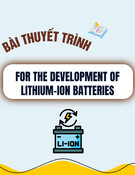
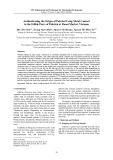

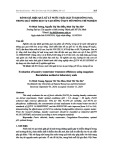
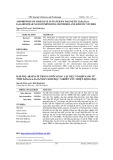

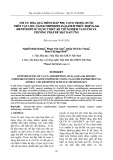

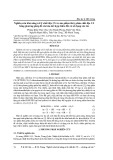
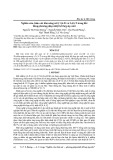

![Tài liệu Vi sinh vật môi trường [Mới nhất]](https://cdn.tailieu.vn/images/document/thumbnail/2025/20251123/ngkimxuyen/135x160/21891763953413.jpg)
![Sổ tay truyền thông Phân loại chất thải rắn sinh hoạt trên địa bàn tỉnh Quảng Nam [Chuẩn nhất]](https://cdn.tailieu.vn/images/document/thumbnail/2025/20251114/kimphuong1001/135x160/1701763094001.jpg)


![Quản lý chất thải nguy hại: Sổ tay Môi trường [Chuẩn nhất]](https://cdn.tailieu.vn/images/document/thumbnail/2025/20251029/kimphuong1001/135x160/9011761720170.jpg)









